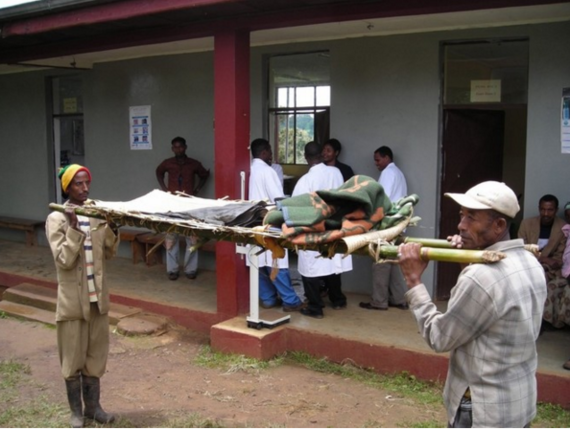- Stay Connected
Having a Baby is Hard in Ethiopia: Women Walk A Lot, and Wait A Lot

Maternal health has made great advances in Ethiopia. In my 10 years conducting research on maternal health, I’ve seen a big push to build more health facilities and to provide ambulances to transport pregnant women to these facilities.
But one of the big challenges for women is referring them for help from one facility to the next level. Aside from the facilities being very far apart, in some places there are no roads and limited transportation. The women have to walk from facility to facility. Or be carried. This makes it impossible to calculate how much time it will take them.
As more and more health facilities have been built in the past few years, more and more women walk to attend antenatal care clinics and to have a skilled birth attendant deliver their baby.
In Ethiopia just over 80% of the population lives in rural areas. My doctoral research took place in the rural neighbourhoods (kebeles) in Kafa Zone in southwest Ethiopia. It looked at maternal health and how the goal of reducing maternal mortality fits into Ethiopia’s development agenda.
But it’s impossible to think about maternal health without thinking about the time and distance between where women live in rural kebeles and where the government constructs health facilities: health posts, health centres and hospitals. The three make up a primary health care unit.
There is a health post in each of the kebeles or neighbourhoods, which serves around 5 000 people.
read more
